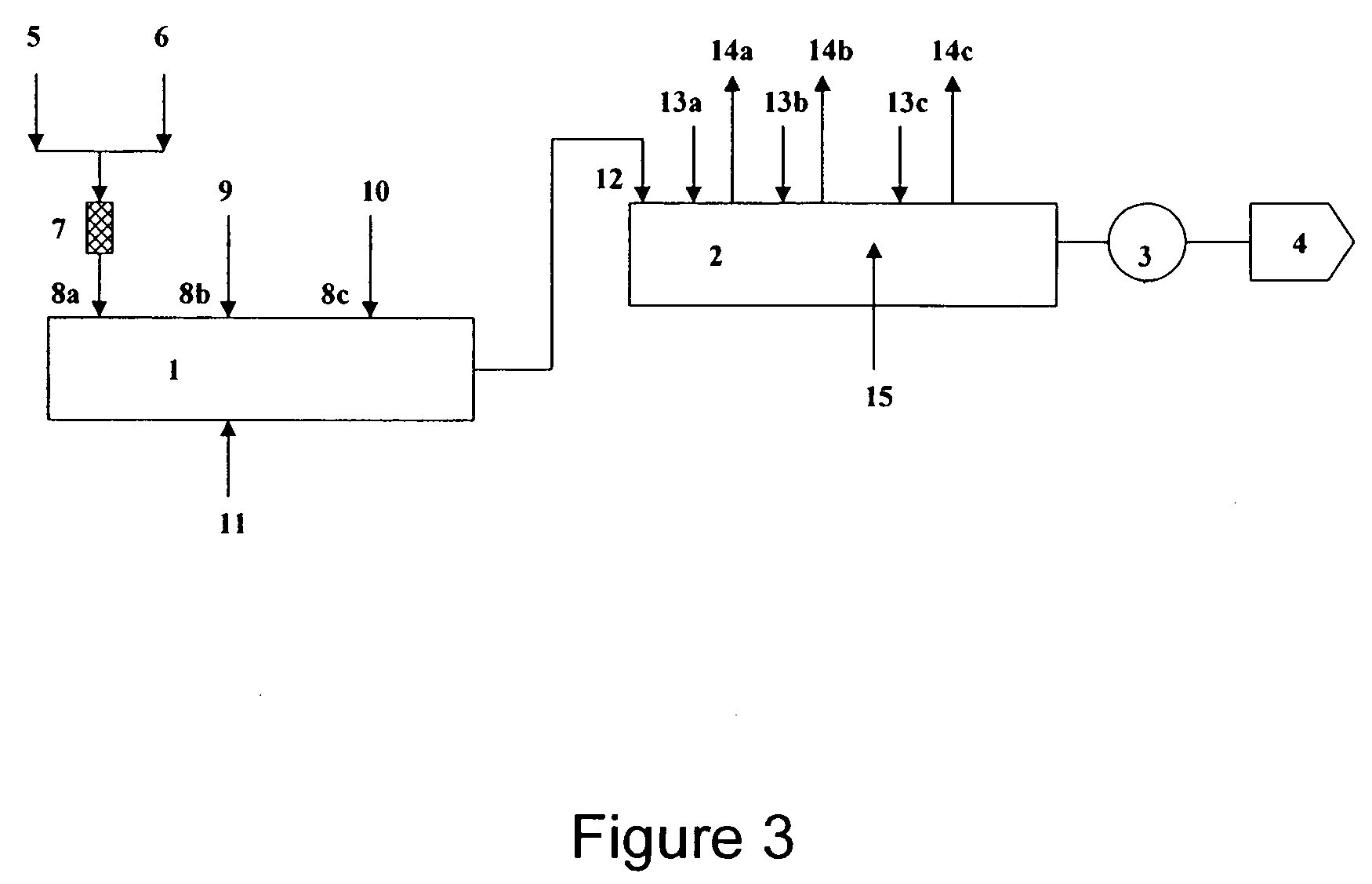Method for the continuous production of polymers made of vinyl compounds by substance and/or solvent polymerization
a technology of substance and solvent, applied in the direction of film/foil adhesive, chemical/physical/physical-chemical process, coating, etc., can solve the problems of mixing, heat removal and reaction control, and the difficulty of process of this kind, so as to increase the average residence time of the reaction mixture
- Summary
- Abstract
- Description
- Claims
- Application Information
AI Technical Summary
Benefits of technology
Problems solved by technology
Method used
Image
Examples
Embodiment Construction
[0037]For the method of the invention the planetary roller extruder is preferably operated in such a way that it is completely filled with the reaction mixture. Owing to this so-called hydraulic filling it is possible to keep the reaction chamber free from oxygen, which hinders the polymerization, and, for a given volume stream, to increase the average residence time as compared with partial filling. Both factors serve for optimum utilization of the extruder section. Rendering the reaction volume inert is also possible, however, by flushing with inert gas, nitrogen for example. The most advantageous for the onset behavior of the reaction is to render the reactor inert beforehand, using nitrogen, and, by charging it with the reaction mixture to obtain hydraulic filling.
[0038]For the addition of the reaction mixture this means that the planetary roller extruder is operated without the feed section which is otherwise customary—in other words, without the single screw upstream of the ce...
PUM
| Property | Measurement | Unit |
|---|---|---|
| polydispersities | aaaaa | aaaaa |
| temperatures | aaaaa | aaaaa |
| temperatures | aaaaa | aaaaa |
Abstract
Description
Claims
Application Information
 Login to View More
Login to View More - R&D
- Intellectual Property
- Life Sciences
- Materials
- Tech Scout
- Unparalleled Data Quality
- Higher Quality Content
- 60% Fewer Hallucinations
Browse by: Latest US Patents, China's latest patents, Technical Efficacy Thesaurus, Application Domain, Technology Topic, Popular Technical Reports.
© 2025 PatSnap. All rights reserved.Legal|Privacy policy|Modern Slavery Act Transparency Statement|Sitemap|About US| Contact US: help@patsnap.com



